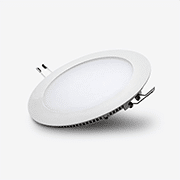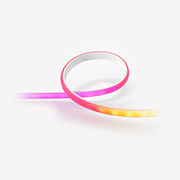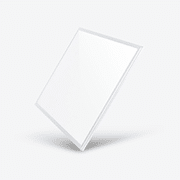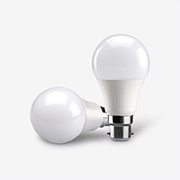The electric current is one of those things we use every day without thinking too much about it. When we turn on a lamp, run the dishwasher or watch a series on TV, we press a button and simply wait for it to work. Behind these everyday actions is an invisible flow that makes it all possible.
In this guide, we explain in a clear and accessible way what electric current is, the types that exist, how it is generated and what effects it produces. A useful review if you are interested in better understanding how the electrical systems around you work.
Table of Contents
What is electric current?
Electric current is the orderly flow of electric charges, usually electrons, circulating through a conductive material. It is a fundamental phenomenon in electricity, since it is responsible for making devices work: from a simple light bulb to complex lighting systems in a lighting ecommerce.
In technical terms, electric current represents the amount of charge that passes through a point in a circuit in a given time. However, to simplify it, the basic concept is that current is “electricity in motion”: without charge flow, there is no electrical energy to carry to a lamp, LED or any other connected device.
This concept connects directly to the definition of electric current, as it not only answers “what is it” but also opens the door to understanding the types of electric current, its formula, units and practical applications.
How is electric current produced and how does it work?
Electric current is produced when there is a potential difference (voltage) between two points in a circuit and these points are connected by a conductive material. In this case, electrons begin to move from the area of higher electron density (negative potential) to the area of lower density (positive potential).
This movement obeys the laws of electricity:
- Voltage sources – such as a battery, battery or power supply – generate the potential difference.
- Conductors – wires, LED strips, electrical components and drivers – allow the movement of electrons.
- Load – light bulbs, resistors, motors – are the devices that use electric current to do work (generate light, heat, motion).
For example, when we turn on an LED panel, electrons flow from the driver through the wiring to the LED, where they transform their electrical energy into light.
Formula of electric current and its units of measurement
The basic formula for electric current, provided it remains constant over time, is:
I = Q/t
- I represents the electric current, measured in amperes (A).
- Q is the electric charge, measured in coulombs (C).
- t is the time in seconds (s).
There is also a practical relationship between potential difference (V), current (I) and resistance (R) expressed in Ohm’s famous law:
V=I×R → I=V/R
- V: voltage in volts (V)
- I: current in amperes (A)
- R: resistance in ohms (Ω)
These formulas are fundamental to understanding how current flows in a circuit and serve as the basis for calculating key parameters such as electrical power, an essential concept in lighting installations.
Types of electric current
There are two main types of electric current: direct current (DC) and alternating current (AC). Each behaves differently and is used in specific applications. Within the alternating current, we can also find different configurations according to the needs of the electrical system: the most common are single-phase and three-phase.

Direct current (DC)
Direct current (DC) is a type of electric current that always flows in the same direction, with a constant magnitude. It is the form of energy provided by batteries, cells and DC power supplies.
DC is ideal for powering electronic devices that require stability and precision, such as drivers, LED strips, portable luminaires or control systems.
Main advantages:
- Provides stable power delivery.
- Allows for more precise control in sensitive electronic systems.
- It is more efficient over short distances and in low voltage applications.
Alternating Current (AC)
Alternating current (AC) is a type of electrical current that changes direction periodically, usually following a sine wave. It is the type of current used in most residential and industrial electrical networks.
Its characteristics are:
- Efficient for transporting energy over long distances.
- Widely used in modern electrical infrastructures.
- The standard frequency in many countries is 50 Hz, which implies 50 changes of direction per second.
Three-phase current
Three-phase current is a form of alternating current consisting of three signals of equal magnitude, 120° out of phase with each other. This system is used in environments where a stable and powerful power supply is required.
It is notable for:
- It offers a more constant power delivery than single-phase.
- Ideal for electric motors, heavy machinery and large lighting systems.
- Improves energy efficiency in high consumption installations.
Single-phase current
Single-phase current consists of a single phase and a neutral conductor. It is the most common system in homes, offices and small businesses.
Key features:
- Suitable for conventional electrical appliances and LED lighting systems.
- Operates on standard voltages in the domestic environment.
- Simple to install and maintain.
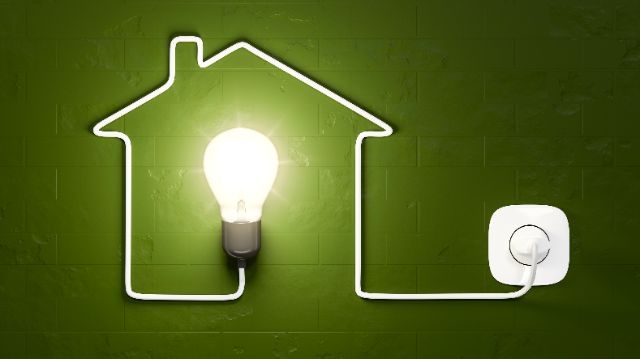
What type of current does a house have?
Most homes are connected to a single-phase AC grid, suitable for powering the most common electrical appliances and lighting systems. This type of installation usually operates with a nominal voltage of 230 V and a frequency of 50 Hz, standard in many countries.
In some cases, especially in homes with higher energy demands – such as those using pumps, electric boilers or high-powered lighting systems – a three-phase system may be installed, although this is not common in residential environments.
To learn more about how these installations are designed and sized, you can consult this article on electrical installations in homes.
Electrical current conducting and insulating materials
Materials are classified according to their capacity to allow the passage of electrons:
- Conductors: they allow current flow. Examples: copper (used in electrical cables), aluminum, silver.
- Insulators: block the passage of current. Examples: plastic (cable sheaths), dry wood, ceramic, glass.
It is vital to choose the right material based on electrical safety and efficiency. Conductor cables will protect the circuit, and insulators will prevent leakage and shock hazards.
Effects of electric current
Electric current produces several important effects that are exploited in lighting and electronic devices:
Thermal effect.
When current passes through a conductor and causes heat to be generated. This phenomenon is the basis for the operation of electric heaters and stoves, which convert electricity into useful heat.
However, in cables and electrical components, excessive heat can be dangerous, so it is essential to size the conductors correctly to avoid overheating and possible failures.
Light effect
This is the transformation of electricity into light. This effect is what allows the operation of devices as varied as light bulbs, strips or LED tubes.
Magnetic effect
Moving current also creates magnetic fields that are essential for the operation of transformers, electric motors and relays.
This effect not only drives machinery, but is also critical in intelligent lighting and automation systems, where sensors and actuators use magnetic fields to operate efficiently.
Chemical effect
Electricity can trigger specific chemical reactions. This principle is applied in industrial processes such as electrolysis and electroplating, and is especially important in battery charging and maintenance.
In the latter example, the chemical effect is key to ensuring that batteries maintain their efficiency and prolong their life cycle.
Key findings on electric current
- What is electric current? It is the flow of electrical charge through a circuit, essential to power any electrical system.
- How it works: It arises from a potential difference and requires a closed circuit with conductors, sources and loads.
- Basic formula: I = Q/t (current = load / time), measured in amperes. Relates to voltage and resistance according to Ohm’s law.
- Main types:
- Direct current (DC)
- Alternating current (AC)
- Single-phase and three-phase systems (configurations within AC).
- Domestic environments: They usually use single-phase alternating current, which is sufficient for most appliances and lighting systems.
- Electrical materials: conductors allow current to pass; insulators block and protect it.
- Effects of current:
- Thermal (heat in resistors).
- Luminous (light generation in lamps and LEDs)
- Magnetic (motor bases and automation)
- Chemical (reactions in batteries and industrial processes)
With these fundamentals, you will be better prepared to understand how electricity works.



